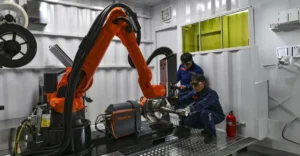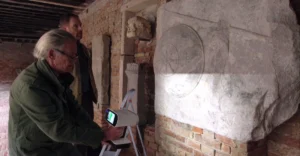Blue Origin partners with Auburn University to enhance copper 3D printing technology for aerospace applications.
Blue Origin donated two EOS M290 powder bed fusion printers to Auburn University’s National Center for Additive Manufacturing Excellence (NCAME) to advance copper printing processes. The donation comes months after Blue Origin’s historic first orbital launch of its New Glenn rocket in January 2025.
Auburn University’s NCAME has a long-standing relationship with NASA in additive manufacturing research. One key material being studied is copper-chromium-niobium (GRCop-42), an alloy originally developed by NASA.
“Copper’s high reflectivity presents challenges for traditional laser-based 3D printing systems to effectively melt and fuse the powder, as much of the laser energy is reflected,” said Nima Shamsaei, director of NCAME. “We already had two EOS M290s, but these new additions will allow us to expedite the sort of applied research that can support Blue Origin’s needs for this alloy.”
The technical challenges of 3D printing copper are significant. According to NCAME research scientist Jonathan Pegues, “Copper also has high thermal conductivity, which makes melting even more inefficient. Once it finally melts, absorptivity increases and leads to inconsistent melt pool behavior and potential defects in the printed part.”
This research gains additional significance as the commercial space industry experiences renewed growth under the current administration. Experts note that advancements in materials research for space applications could accelerate development of domestic manufacturing capabilities, particularly for critical metals like copper.
This partnership reflects the increasing significance of niche additive manufacturing processes to space exploration technology.
































